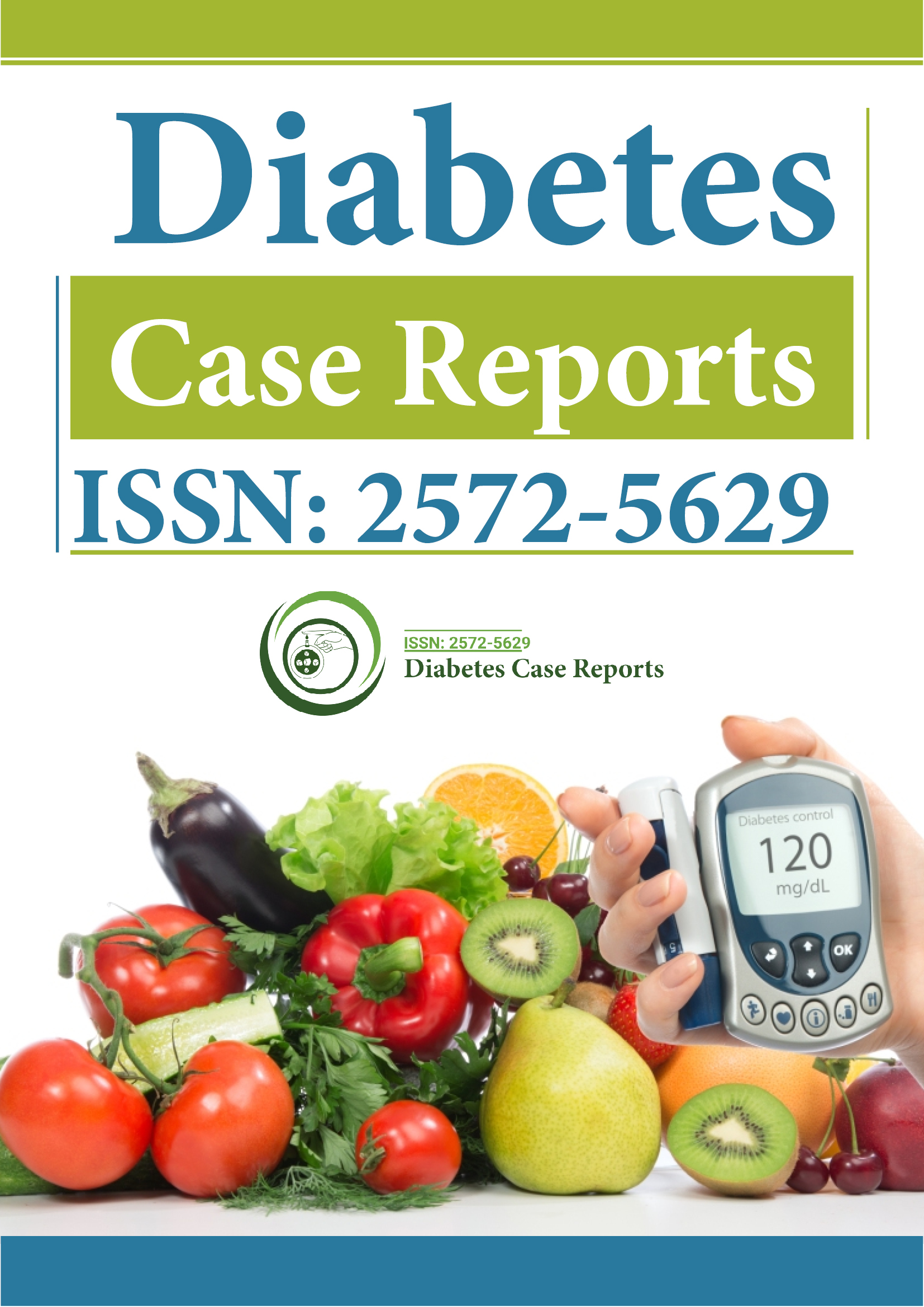Indexed In
- RefSeek
- Hamdard University
- EBSCO A-Z
- Euro Pub
- Google Scholar
Useful Links
Share This Page
Journal Flyer

Open Access Journals
- Agri and Aquaculture
- Biochemistry
- Bioinformatics & Systems Biology
- Business & Management
- Chemistry
- Clinical Sciences
- Engineering
- Food & Nutrition
- General Science
- Genetics & Molecular Biology
- Immunology & Microbiology
- Medical Sciences
- Neuroscience & Psychology
- Nursing & Health Care
- Pharmaceutical Sciences
Opinion - (2023) Volume 8, Issue 6
Mechanism of Hypertriglyceridemia and Elevated Triglycerides in Diabetic Individuals
Allison Shewchuk*Received: 01-Nov-2023, Manuscript No. DCRS-23-23479; Editor assigned: 03-Nov-2023, Pre QC No. DCRS-23-23479(PQ); Reviewed: 23-Nov-2023, QC No. DCRS-23-23479; Revised: 01-Dec-2023, Manuscript No. DCRS-23-23479(R); Published: 08-Dec-2023, DOI: 10.35841/2572-5629-23.8.185
Description
Hypertriglyceridemia is indeed a prevalent condition characterized by elevated levels of triglycerides in the bloodstream. Triglycerides, a type of lipid or fat which is essential for energy storage and are derived from the foods we consume. However, when their levels become excessively high, it can pose significant health risks. This condition is particularly common in individuals with diabetes, with up to 70% of people with diabetes experiencing elevated triglyceride levels. The presence of high triglycerides in the bloodstream can be attributed to various factors. One of the leading causes is poorly controlled type 2 diabetes. In individuals with diabetes, the body's ability to regulate blood sugar levels is impaired, which can contribute to abnormal lipid metabolism. Additionally, dietary choices play a pivotal role. Consuming more calories than the body can expend leads to the storage of excess energy in the form of triglycerides. High carbohydrate intake, especially refined carbohydrates and sugars, can also exacerbate this issue by promoting the conversion of excess glucose into triglycerides. Hypertriglyceridemia is diagnosed through a blood test called a lipid profile test.
Moreover, certain health conditions and risk factors can contribute to hypertriglyceridemia. These include obesity, metabolic syndrome, and genetics. Metabolic syndrome, in particular, is a constellation of conditions that includes high blood pressure, elevated blood sugar levels, central obesity, and abnormal lipid profiles, often characterized by high triglycerides. Having metabolic syndrome not only increases the risk of cardiovascular diseases but also raises the likelihood of developing type 2 diabetes. The link between hypertriglyceridemia and Cardiovascular Disease (CVD) is a matter of concern, especially for individuals with diabetes. Elevated triglyceride levels have been identified as an independent risk factor for CVD, meaning that even in the absence of other risk factors like high cholesterol; high triglycerides alone can increase likelihood of heart disease and stroke. When combined with diabetes, which is already associated with an increased risk of CVD, the presence of hypertriglyceridemia further compounds this risk. The diagnosis of hypertriglyceridemia involves physical examination, medical history of diabetes or obesity, and identification of characteristic lesions on the skin and eyes, followed by a blood test to check the levels. Following a diagnosis, additional blood tests are typically necessary to ascertain whether the elevated triglyceride level is attributed to underlying conditions ("secondary hypertriglyceridemia") or if it arises without an underlying cause ("primary hypertriglyceridemia").
The initial approach to managing hypertriglyceridemia typically involves lifestyle interventions. Weight loss through a combination of dietary modifications and increased physical activity can significantly lower triglyceride levels. Reducing the consumption of saturated fats, which are commonly found in animal products and some processed foods, is essential. Instead, individuals are encouraged to incorporate monounsaturated fats, such as those found in olive oil and avocados, into their diets. Additionally, carbohydrate intake should be monitored and reduced, especially in the form of refined sugars and grains, as excessive carbohydrates can lead to elevated triglycerides. Furthermore, limiting alcohol consumption can help improve triglyceride levels, as excessive alcohol intake can raise triglyceride levels. In some cases, lifestyle modifications may not be sufficient to bring triglyceride levels within a healthy range. In such situations, healthcare providers may consider prescribing medications to further lower triglycerides. These medications can include fibrates, niacin, and omega-3 fatty acids.
Conclusion
It’s important to note that high triglycerides don’t cause diabetes. Instead, elevated levels suggest a malfunction in the body's ability to effectively convert food into energy. The body produces insulin, which serves as a facilitator, ushering glucose -the form of sugar present in the blood stream-into cells and converts the body glucose into energy. Hypertriglyceridemia is a common condition in people with diabetes. It can be caused by various factors such as poorly-controlled type 2 diabetes and high carbohydrate intake. It is a multifaceted condition with farreaching implications, particularly for individuals living with diabetes. The intricate interplay between high triglyceride levels, diabetes, and cardiovascular health underscores the importance of proactive management. In healthcare, knowledge is power, and understanding the intricate dynamics of hypertriglyceridemia is key to achieving better outcomes for those with diabetes.
Citation: Shewchuk A (2023) Mechanism of Hypertriglyceridemia and Elevated Triglycerides in Diabetic Individuals. Diabetes Case Rep. 8:185.
Copyright: © 2023 Shewchuk A. This is an open-access article distributed under the terms of the Creative Commons Attribution License, which permits unrestricted use, distribution, and reproduction in any medium, provided the original author and source are credited.
